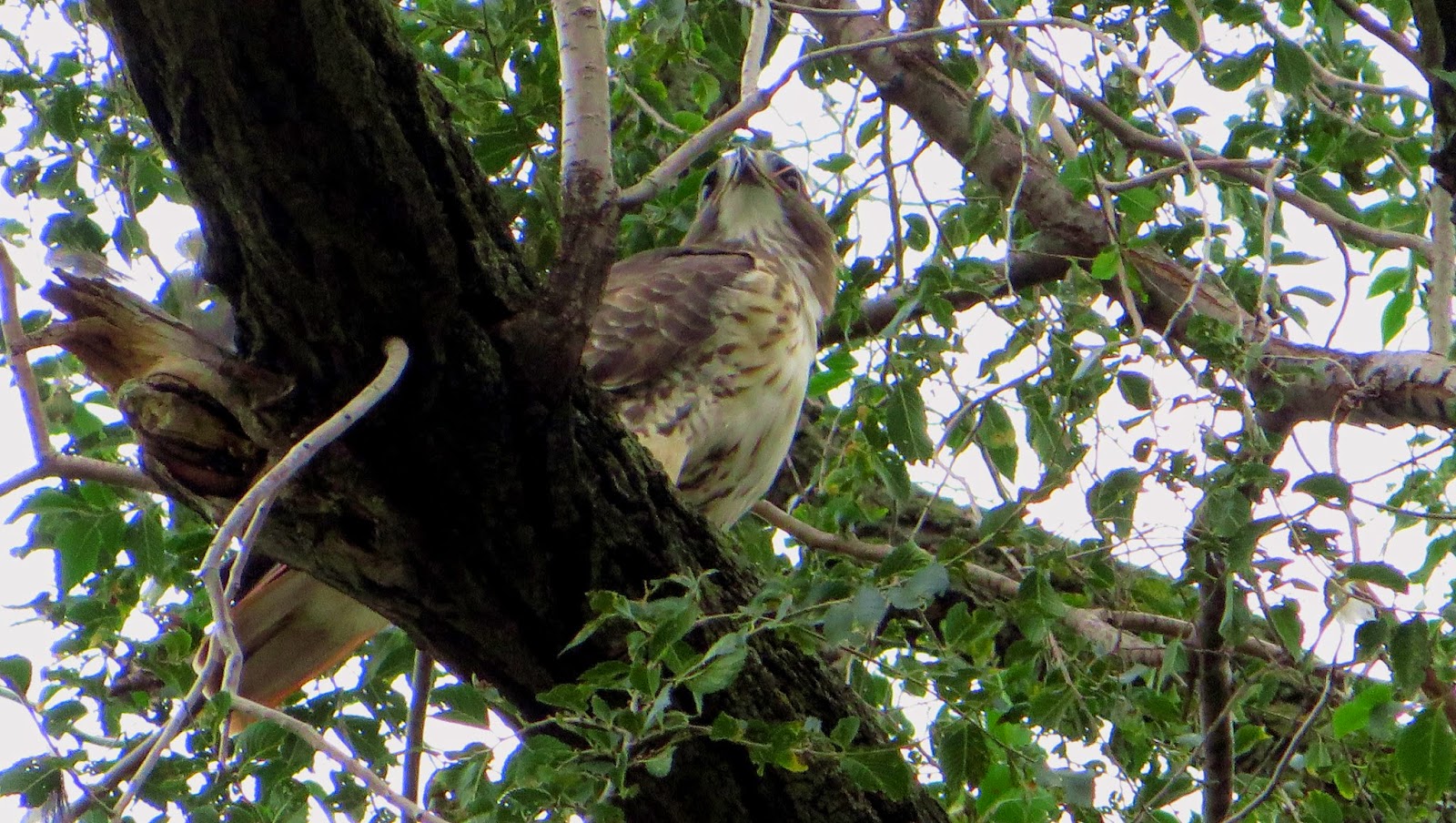October 14th: I saw this red-tailed hawk today on the St George campus at U of T. It flew over the heads of hundreds of students at King's College Circle to land on a poor unsuspecting black squirrel. Life in the city is good if you have a taste for squirrel and pigeon. Since these prey species are all around all winter, red-tailed hawks often stay in the city all year.
 |
| Check out the paw and tail of the black squirrel dinner... |






